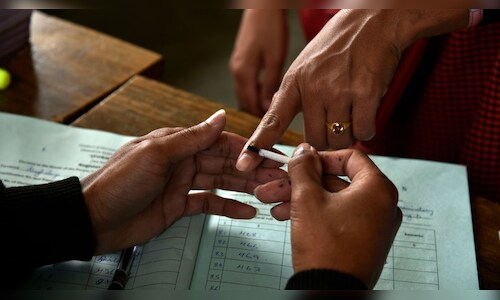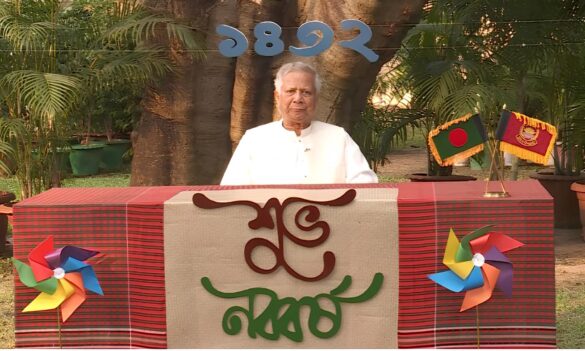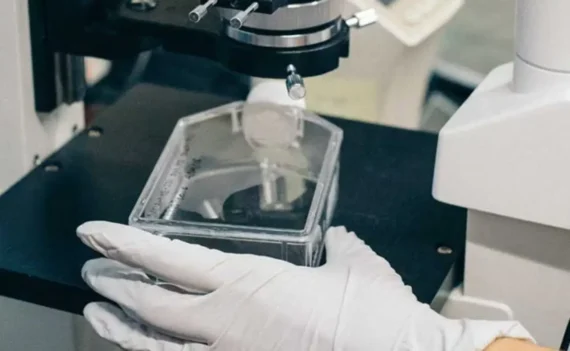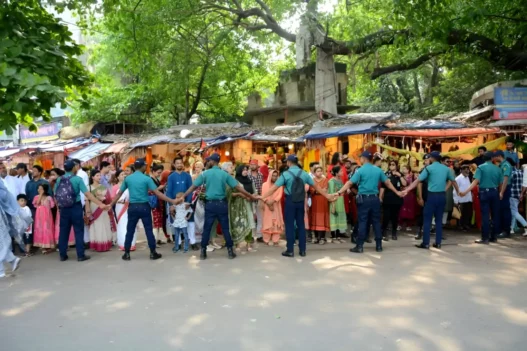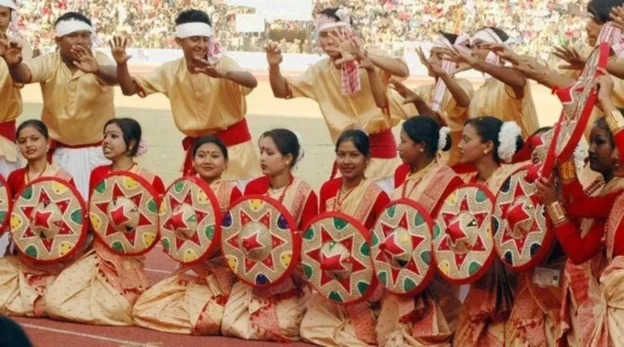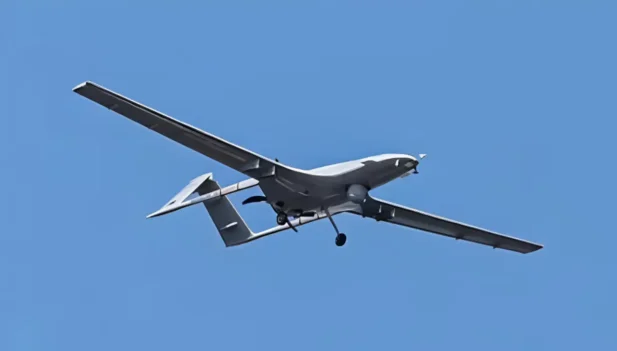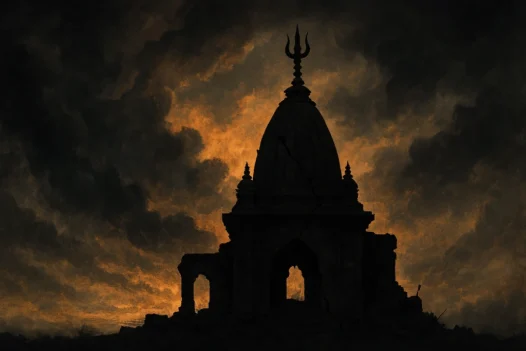In the middle of India’s national elections, where three phases of polling were successfully completed (another four are waiting), various sections have expressed concern over the low voters’ turn out in the largest electoral show on Earth. Election Commission of India (ECI), which conducts all important polls under constitutional provisions in the country of 1.4 billion populations, reveals the polling percentages as 66.14, 66.71 and 65.68 in the concluded three phases of voting respectively. But contrary to the national statistics, northeast India comprising 60 million populaces (and surrounded by many foreign nations) scored over 75 percent voter’s response in the last three phases.
Meanwhile, many political observers come up with theories that the declining voter turnout indicates the shrinkage of electoral influence by the ruling Bharatiya Janata Party (read Prime Minister Narendra Modi) over the years. The saffron party is projected to win the general elections 2024 with a satisfactory number of lawmakers in the 545-member Lok Sabha by a number of opinion polls before the electoral process was executed. Now those pundits put the projection that PM Modi’s dream to retain power for the third consecutive term will be spoiled as the voters have lost interest in the electoral process and more precisely on the ruling BJP-led National Democratic Alliance.
If the old statistics are analysed, the all India averages of polling in Lok Sabha elections remain lower than 70 5%. In 2009 general elections the country observed less than 60% polling (Congress retained power in New Delhi), whereas the next national elections in 2014 recorded over 66% (BJP came to power) and the 17th Lok Sabha polls in 2019 reported over 67% voting. NDA won over 350 Parliamentary seats in the last national polls and this time the ruling alliance is looking for 400 plus members in the lower house of Parliament. The counting of votes will take place on 4 June and the results are expected the same day
Despite relentless awareness campaigns by the ECI, social organisations, media outlets and political personalities, the voter turnout has not significantly improved in mainland India. The opposition parties, which even fail to attract more voters to the polling booths across the country, try to score electoral advantages with the unimpressive voter response asserting that it was a silent mandate against the NDA. However, the voters of north-eastern States have ridiculed the theory with nearly 13% more polling than the national average. The lion’s share of credit goes to Lok Jagaran Mancha Asom, which successfully launched a campaign for 100% polling with printed leaflets, music videos, short plays etc in the region.
The land-locked region, which sends 25 members to Lok Sabha, projected the impressive polling in all three phases in a peaceful ambience except some incidents in Manipur. Often termed as a land of separatists, where the residents remain reluctant to participate in any national event including the general elections, the voters have once again upheld their inherent commitment for the great nation. Assam, largest State of the region, witnessed fully peaceful and participatory polling in the final phase on 7 May for four Parliamentary seats with over 81.61 % voter turnout, where Dhubri went up to 90% polling. It recorded voter turnout 78.25% and 77.35% respectively in the first two phases.
Tripura, Meghalaya, Sikkim, Manipur also recorded impressive polling (over 75 %) in the 1st and 2nd phases. The BJP put candidates in all ten parliamentary seats of Assam in 1st and 2nd phases, but the saffron party fielded only one nominee (Bijuli Kalita Medhi for Guwahati LS seat) in the last phase. It extended support to its alliance candidates namely Phani Bhusan Choudhury (Asom Gana Parishad) for Barpeta seat, Zabed Islam (AGP) for Dhubri and Jayanta Basumtary (United People’s Party Liberal) for Kokrajhar constituency. The former women wing chief of Assam State primarily faces an electoral challenge from the Indian National Congress candidate Mira Borthakur Goswami in Guwahati.
In Barpeta, the AGP legislator faces Deep Bayan (Congress), Manoranjan Talukdar (a CPM legislator), and a few others, whereas in Dhubri, the AGP nominee challenges sitting All India United Democratic Front MP Moulana Badruddin Ajmal and Congress legislator Rakibul Hussain in the westernmost constituency. The nomination of sitting Kokrajhar MP Naba Kr Sarania was cancelled and hence the electoral battle in the Bodo-dominated constituency emerged as a triangular contest, where the UPPL nominee faces challenges from Kampa Borgoyary (Bodoland People’s Front) and Garjan Mashhary (Congress).
In 2nd phase, BJP’s sitting MP Dilip Saikia faces electoral challenges from Madhav Rajbangshi (Congress) and Durgadas Boro (BPF) in Darrang-Udalguri seat. Diphu seat witnesses frontal electoral fights between Amarsing Tisso (BJP) and Joy Ram Engleng (Congress). In Silchar, State minister Parimal Suklabaidya faced Surya Kanta Sarkar (Congress) and Radheshyam Biswas (Trinamool Congress). Congress party is expecting positive outcomes in Nagaon and Karimganj seats. The sitting MP Pradyut Bordoloi primarily faces Aminul Islam (AIUDF) and Suresh Borah (BJP) in Nagaon and in Karimganj, the oldest party fielded Hafiz Rashid Ahmed Choudhury against Sahabul Islam Choudhury (AIUDF) and Kripanath Malla (BJP).
In this phase, two seats of Tripura and Manipur also went to polls, where in Tripura East, the saffron party supported Tipra Motha candidate Kriti Singh Devbarma against CPM nominee Rajendra Reang which recorded over 80 % polling. Outer Manipur seat went to polls in both the phases where Kachui Timothy Zimik (Naga People’s Front) was supported by the BJP against the Congress candidate Alfred Kanngam S Arthur. Many booths in and around Imphal went for re-polling and the State’s voter turnout reached to over 75%.
During the 1st phase, all north-eastern States participated in the polling. West Tripura seat, where BJP fielded former State CM Biplab Kumar Deb against the united opposition candidate Ashish Kumar Saha, witnessed over 81 % polling. In Inner Manipur seat, BJP candidate Basanta Kumar Singh faced challenges from Angomcha Bimol Akoijam (Congress). Mizoram witnessed a peaceful polling for the lone Parliamentary seat, but it recorded not so impressive 55 % turnout. Here Zoram People’s Movement nominee Richard Vanlalhmangaiha was challenged by K. Vanlalvena (Mizo National Front), Lalbiakzama (Congress) and Pu Vanhlalmuaka (BJP).
Tura seat of Meghalaya recorded 81% turnout, where the ruling National People’s Party put sitting MP Agatha Sangma against Zenith Sangma (Trinamool Congress) and Saleng A Sangma (Congress). Shillong constituency however recorded around 65% voting, where sitting Congress MP Vincent Pala was challenged by State minister Ampareen Lyngdoh. Nagaland, even after six districts voted zero, recorded around 57 % polling for the lone Parliamentary seat. The Nationalist Democratic Progressive Party nominee Chumben Murry (endorsed by People’s Democratic Alliance) emerged as a front runner against his rival Supongmeren Jamir (Congress) in this seat.
The voters of Arunachal Pradesh successfully exercised their franchise to elect two MPs and 50 legislators, with a turnout of around 67 %. Here 10 BJP candidates including State chief minister Pema Khandu and his deputy Chowna Mein won the race in assembly segments with no fielded opponents. Union minister Kiren Rijiju faced Congress nominee Nabam Tuki in Arunachal West seat and sitting saffron MP Tapir Gao was challenged by Bosiram Siram in Arunachal East constituency.
The electorate of Sikkim also voted for an MP and 32 legislators with 75 % electoral responses. The ruling Sikkim Krantikari Morcha fielded sitting MP Indra Hang Subba against Prem Das Rai (Sikkim Democratic Front), Gopal Chettri (Congress) and Dinesh Chandra Nepal (BJP). State CM Prem Singh Tamang, former CM Pawan Kumar Chamling, legendary footballer Bhaichung Bhutia, etc contested from separate assembly constituencies.
In Assam, Union minister Sarbananda Sonowal faced electoral challenges from Manoj Dhanowar (Aam Aadmi Party) and Lurinjyoti Gogoi (Asom Jatiya Parishad) in Dibrugarh seat. Another Rajya Sabha member Kamakhya Prasad Tasa had a direct contest from Roselina Tirkey (Congress) in Kaziranga. Similarly in Sonitpur (earlier named as Tezpur) BJP candidate Ranjit Dutta was challenged by Prem Lal Ganju (Congress) and Rishiraj Kaundinya (AAP). Sitting saffron MP Pradan Barua primarily faced challenges from Uday Shankar Hazarika (Congress) in Lakhimpur. Jorhat seat attracted public attention as two sitting MPs namely Gaurav Gogoi (who represented now delimited Kaliabor seat) and sitting saffron MP Tapan Gogoi contested with high promises.

